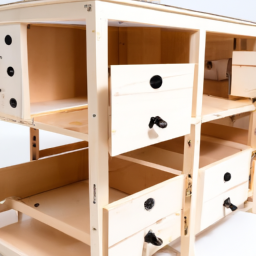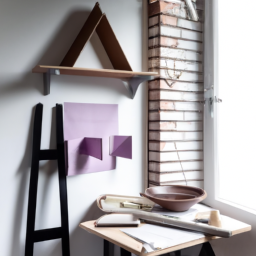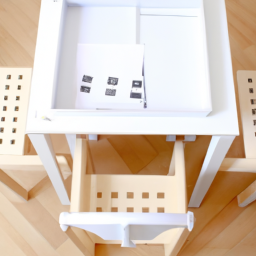
Are you looking to create custom furniture for your child’s room? If so, you’ve come to the right place. In this blog post, we will discuss the ins and outs of child furniture plans, providing you with all the information you need to get started on your next DIY project. Whether you’re a seasoned woodworker or a beginner looking to try your hand at furniture making, this post will guide you through the process of creating beautiful and functional pieces for your little one’s space. So, grab your tools and let’s dive into the world of child furniture plans.
Introduction
When it comes to decorating a child’s room, having the right furniture is essential. However, buying new furniture can be expensive, and it may not always fit your specific needs. That’s where DIY child furniture plans come in handy. By creating your own furniture, you can customize it to your child’s preferences and save money in the process. In this guide, we will walk you through the basics of DIY child furniture plans and provide you with tips on how to get started.
Choosing the Right Plans
Before you start building your own child furniture, it’s important to choose the right plans. There are many websites and books available that offer a wide range of plans for different types of furniture, from beds to toy chests. When selecting a plan, make sure to consider your skill level and the tools you have available. It’s also a good idea to read reviews from others who have tried the plan to ensure it is reliable and easy to follow.
Once you have chosen a plan, take the time to carefully read through it and familiarize yourself with the steps involved. Make a list of the materials and tools you will need, and gather everything before you start building. Having everything prepared ahead of time will make the process much smoother and prevent any delays.
When it comes to choosing the right plans, don’t be afraid to get creative and add your own personal touch. You can customize the design, size, and color of the furniture to suit your child’s preferences and match the room’s decor. This is where DIY child furniture plans truly shine, as they allow you to create unique pieces that are one-of-a-kind.
Building the Furniture
Once you have all the materials and tools ready, it’s time to start building the furniture. Follow the plan step by step, taking your time to ensure each piece is cut and assembled correctly. Pay attention to measurements and angles to avoid any mistakes that could affect the final outcome.
Don’t be discouraged if you encounter challenges along the way. Building furniture takes practice, and it’s normal to make mistakes, especially as a beginner. Take your time, ask for help if needed, and don’t rush through the process. Remember, the goal is to create something that you and your child will love and cherish for years to come.
As you build the furniture, pay attention to details such as sanding, staining, and sealing. These finishing touches will not only enhance the look of the furniture but also protect it from wear and tear. Don’t skip these steps, as they are essential for ensuring the longevity of your DIY child furniture.
Tips for Success
Here are some tips to help you succeed in your DIY child furniture project:
1. Start with simple projects before moving on to more complex ones. This will help you build your skills and confidence.
2. Invest in quality tools and materials. While it may be tempting to cut corners, using the right tools and materials will ensure a better end result.
3. Take your time and don’t rush the process. Building furniture requires patience and attention to detail.
4. Don’t be afraid to ask for help. Whether it’s from a friend, family member, or online community, getting advice and guidance can make a big difference.
By following these tips and guidelines, you can create beautiful and functional furniture for your child’s room that will be cherished for years to come. DIY child furniture plans are a great way to unleash your creativity and build something truly special.
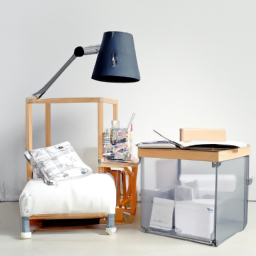
Top 5 Child Furniture Plans for Your Next DIY Project
Introduction
When it comes to decorating a child’s room, having the right furniture is essential. Not only does it provide functionality, but it also adds to the overall aesthetic of the space. If you’re a fan of DIY projects and want to create custom furniture for your child’s room, then you’re in luck. In this article, we will discuss the top 5 child furniture plans that you can easily tackle as your next DIY project.
1. DIY Toddler Bed
One of the most popular child furniture plans is a DIY toddler bed. This project is perfect for parents who want to transition their child from a crib to a bed. To create a DIY toddler bed, you will need basic woodworking skills and tools such as a saw, drill, and sander. You can customize the design of the bed to fit your child’s style and preferences. Consider using non-toxic paint or stain to ensure the safety of your child.
When building a DIY toddler bed, it’s important to measure the mattress size accurately to ensure a snug fit. You can add safety rails to prevent your child from rolling out of bed. Additionally, consider adding storage drawers underneath the bed for extra functionality. Once you complete this project, your child will have a cozy and stylish bed to sleep in.
2. DIY Play Table
Another popular child furniture plan is a DIY play table. This project is perfect for creating a designated space for your child to play and be creative. To build a DIY play table, you will need basic woodworking skills and tools such as a saw, drill, and sandpaper. You can customize the size and shape of the table to fit your child’s playroom or bedroom.
When building a DIY play table, consider adding storage compartments for toys and art supplies. You can also paint the table with chalkboard paint to create a fun and interactive surface for your child to draw on. This project is a great way to encourage imaginative play and creativity in your child.
3. DIY Bookshelf
A DIY bookshelf is a practical and stylish addition to any child’s room. This project is perfect for organizing your child’s books and toys while adding a decorative touch to the space. To build a DIY bookshelf, you will need basic woodworking skills and tools such as a saw, drill, and level. You can customize the size and design of the bookshelf to fit your child’s room.
When building a DIY bookshelf, consider adding adjustable shelves to accommodate different book sizes. You can also paint the bookshelf in bright colors to create a playful and vibrant look. This project is a great way to promote reading and organization in your child’s room.
In conclusion, creating custom furniture for your child’s room can be a fun and rewarding DIY project. By following these top 5 child furniture plans, you can create functional and stylish pieces that your child will love. Remember to use safe and non-toxic materials when building furniture for children. Happy DIY-ing!
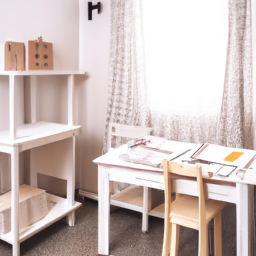
Customizing Child Furniture Plans to Fit Your Design Style
When it comes to designing furniture for children, there are endless possibilities to explore. Whether you are a seasoned woodworker or just starting out, customizing child furniture plans to fit your design style can be a rewarding and enjoyable process. By following a few key steps, you can create unique and personalized pieces that are not only functional but also aesthetically pleasing.
Step 1: Choose the Right Materials
One of the first steps in customizing child furniture plans is selecting the right materials for your project. When designing furniture for children, it is important to choose materials that are durable, safe, and easy to clean. Hardwoods such as oak, maple, or cherry are popular choices for child furniture due to their strength and longevity. Additionally, you may want to consider using non-toxic finishes and paints to ensure the safety of your little ones.
Before purchasing materials, carefully review the child furniture plans to determine the quantity and dimensions needed for each piece. This will help you estimate the cost of the project and ensure that you have everything you need to complete it successfully. If you are unsure about which materials to use, consult with a local woodworking expert or visit a specialty lumber store for guidance.
Once you have selected the materials for your project, it is important to prepare them properly before beginning construction. This may involve cutting, sanding, and finishing the wood to ensure a smooth and professional result. Taking the time to properly prepare your materials will help you achieve a high-quality finished product that you can be proud of.
Step 2: Customize the Design
After selecting the materials for your child furniture project, the next step is to customize the design to fit your personal style and preferences. This may involve making adjustments to the dimensions, shape, or details of the original plans to create a piece that is truly one-of-a-kind. Consider incorporating elements such as curved edges, decorative accents, or unique hardware to add visual interest and personality to your furniture.
When customizing the design of your child furniture, it is important to keep in mind the specific needs and preferences of your little ones. For example, if you are designing a desk for a school-aged child, you may want to include storage compartments for books and supplies. If you are building a bed for a toddler, you may want to incorporate safety features such as guardrails or rounded edges to prevent accidents.
Before making any major design changes, it is a good idea to create a detailed sketch or blueprint of your customized furniture piece. This will help you visualize the final product and make any necessary adjustments before construction begins. Additionally, consider seeking feedback from family members, friends, or design professionals to ensure that your design is both functional and visually appealing.
Step 3: Build with Care and Precision
Once you have selected the materials and customized the design of your child furniture project, it is time to begin construction. Building furniture for children requires careful attention to detail and precision to ensure a safe and durable finished product. Take your time to follow the child furniture plans step-by-step, making sure to measure accurately and double-check your work as you go.
As you work on constructing your child furniture piece, pay close attention to the assembly instructions and any special techniques or tools that may be required. If you encounter any challenges or have questions along the way, do not hesitate to seek help from a woodworking expert or online community for guidance. Remember that patience and perseverance are key to successfully completing a woodworking project, especially when customizing furniture for children.
After completing construction, take the time to inspect your finished child furniture piece for any imperfections or safety concerns. Sand any rough edges, tighten any loose hardware, and apply a final coat of finish or paint to protect the wood and enhance its appearance. Once your furniture is complete, place it in your child’s room and enjoy the satisfaction of knowing that you have created a unique and personalized piece that will be treasured for years to come.
Essential Points
Child furniture plans are essential for anyone looking to create custom furniture pieces for their little ones. These plans provide detailed instructions and measurements for building items such as cribs, beds, dressers, and more. By following these plans, parents can ensure that the furniture they create is safe, sturdy, and tailored to their child’s needs.
Whether you are a seasoned woodworker or a beginner looking to try your hand at DIY projects, child furniture plans can help you create beautiful and functional pieces for your child’s room. With a wide variety of plans available online, you can choose designs that match your style and skill level. By investing time and effort into creating custom furniture for your child, you can not only save money but also create lasting memories and heirloom pieces that can be passed down for generations.
Here are some questions from our readers:
Q1: Are child furniture plans suitable for beginners?
Child furniture plans can vary in complexity, but there are plenty of beginner-friendly options available. Look for plans that provide clear instructions and diagrams to help you along the way.
Q2: What types of child furniture can I build with these plans?
You can find plans for a variety of child furniture items, including cribs, beds, dressers, toy chests, and more. Whether you’re looking to furnish a nursery or a child’s bedroom, there are plans available to suit your needs.
Q3: Do I need special tools to build child furniture from these plans?
While some plans may require specific tools, many child furniture plans are designed to be accessible to DIY enthusiasts with basic tools. Before starting a project, make sure to review the list of required tools and materials.
Q4: Can I customize the child furniture plans to fit my space or design preferences?
Yes, many child furniture plans can be easily customized to fit your specific needs. Whether you want to adjust the dimensions, change the finish, or add unique details, you can often tailor the plans to create a piece that suits your style.
Q5: Where can I find child furniture plans online?
There are many websites and online platforms that offer a wide selection of child furniture plans for purchase or download. Some popular options include woodworking websites, DIY blogs, and online marketplaces. Take your time to browse and find the plans that best match your skill level and project requirements.

Jim Sawyer is a seasoned woodworker with a passion for turning raw materials into stunning pieces. With years of experience under his belt, Jim has honed his craft and developed a unique style that blends traditional techniques with modern innovation. Through his blog, he shares his expertise, offering step-by-step tutorials, woodworking project ideas, furniture plans, and tips for woodworking enthusiasts of all levels. From beginner-friendly woodworking projects to intricate furniture plans, Jim’s work is a testament to the beauty and versatility of woodworking.




